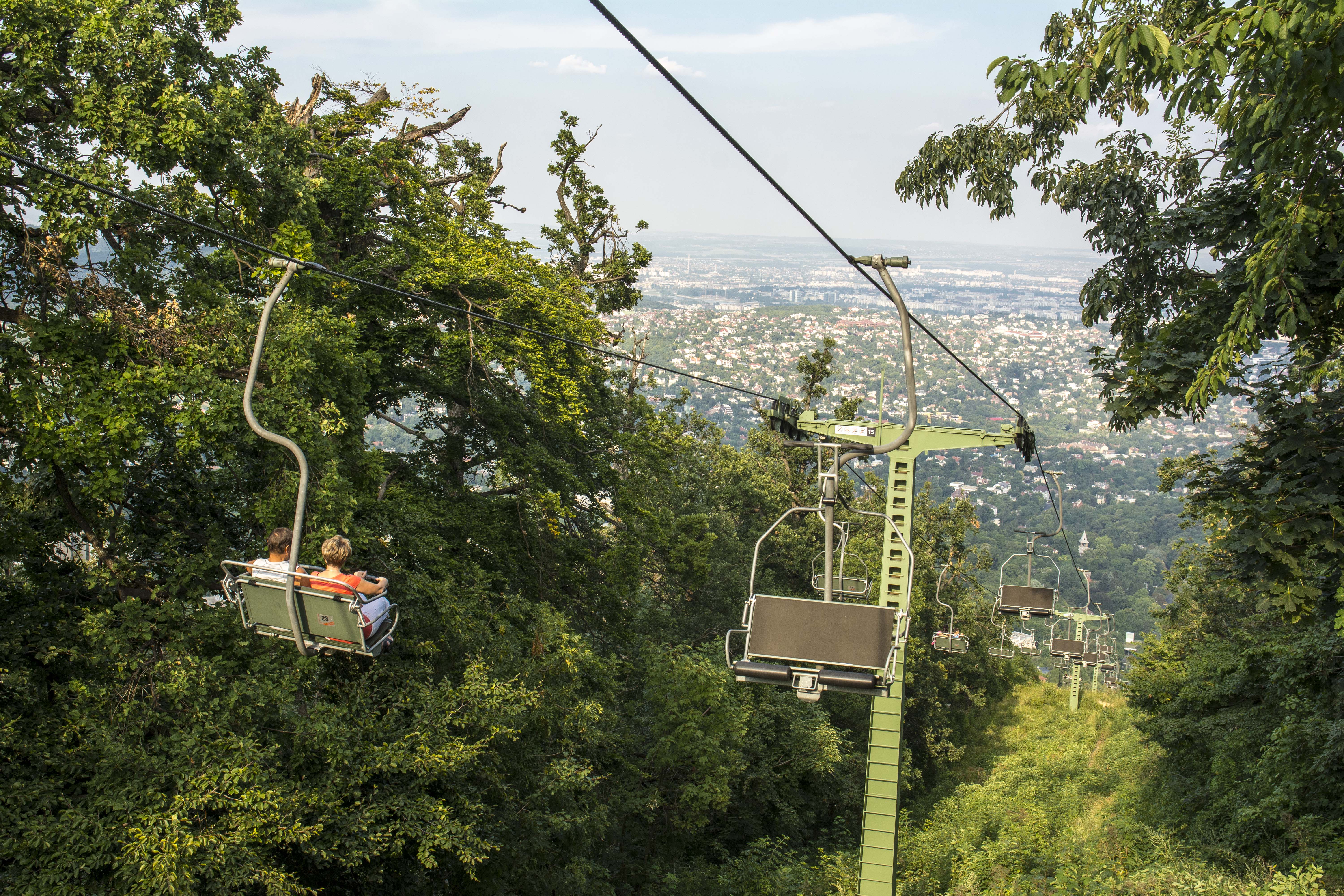Few Budapest public-transport lines begin and end amid such divergent scenery as bus 291. Taking off from the gritty parking lot by Pest’s unmistakably historic Nyugati Station, this river-crossing coach ventures deep into the Buda Hills and passes through some of Hungary’s most fashionable neighbourhoods before the line ends within the lushly forested valley of District XII’s Zugliget, a popular recreation site for centuries. Just steps away from bus 291’s woodland terminus, day-trippers find the base station for Budapest’s own chairlift, whisking adventurers of all ages up steep slopes towards the summit of János Hill and its crowning Elizabeth Lookout Tower.
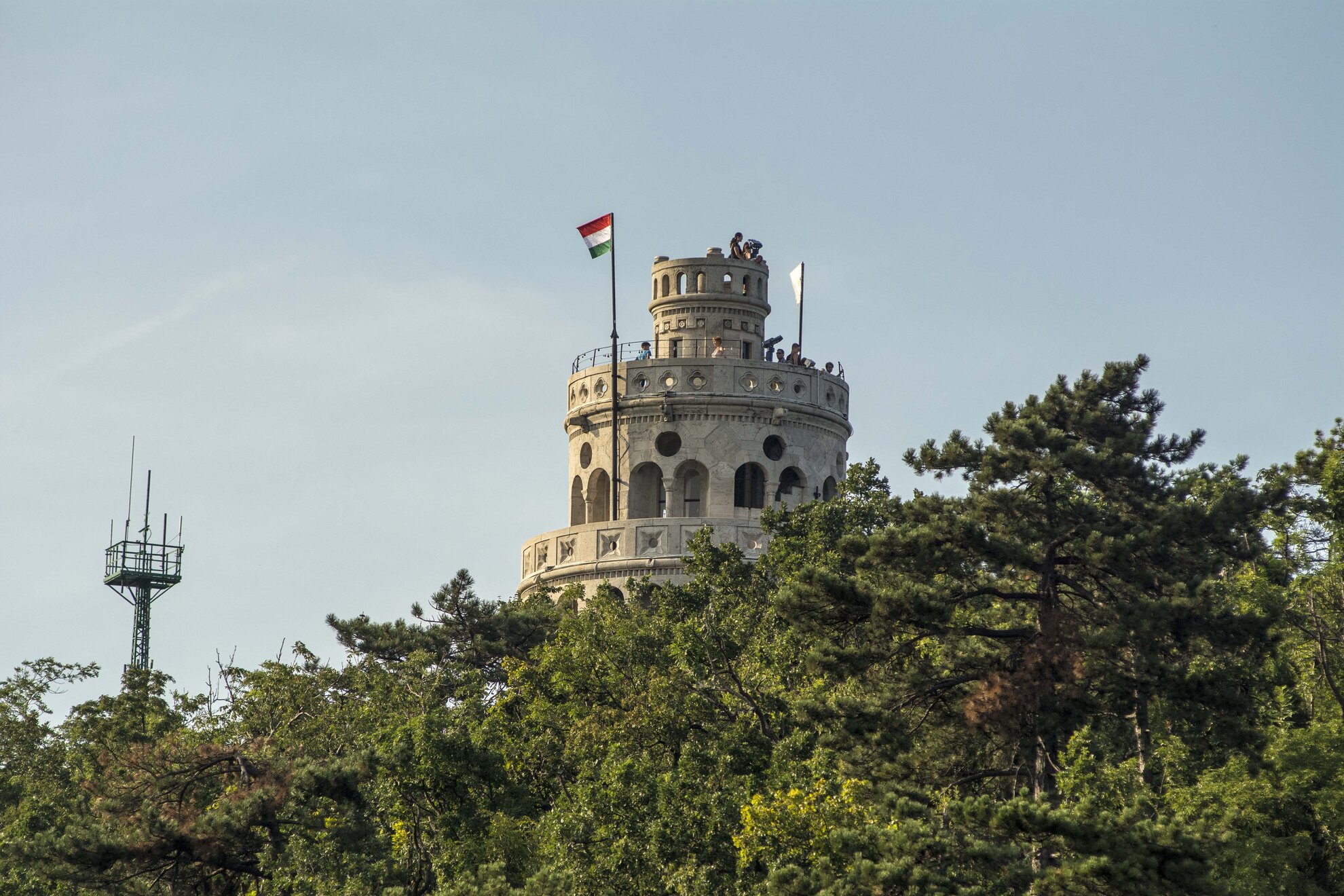
Operating all year long whether János Hill is covered with thick leaves or thick snow, the chairlift is certainly Zugliget’s main attraction. From the top, it’s easy to reach other outdoorsy Buda highlights such as the recently renovated Normafa parkland, the Children’s Railway (also running year-round), and numerous hiking trails in all directions – including the short. rubberised path up to Elizabeth Lookout Tower. However, just a quick ride to the chairlift summit station and back provides plenty of panoramic views over the entire city to admire while savouring the thrill of soaring metres above the slope, skirting over treetops and waving hello to locals lounging in quaint cottage gardens below.
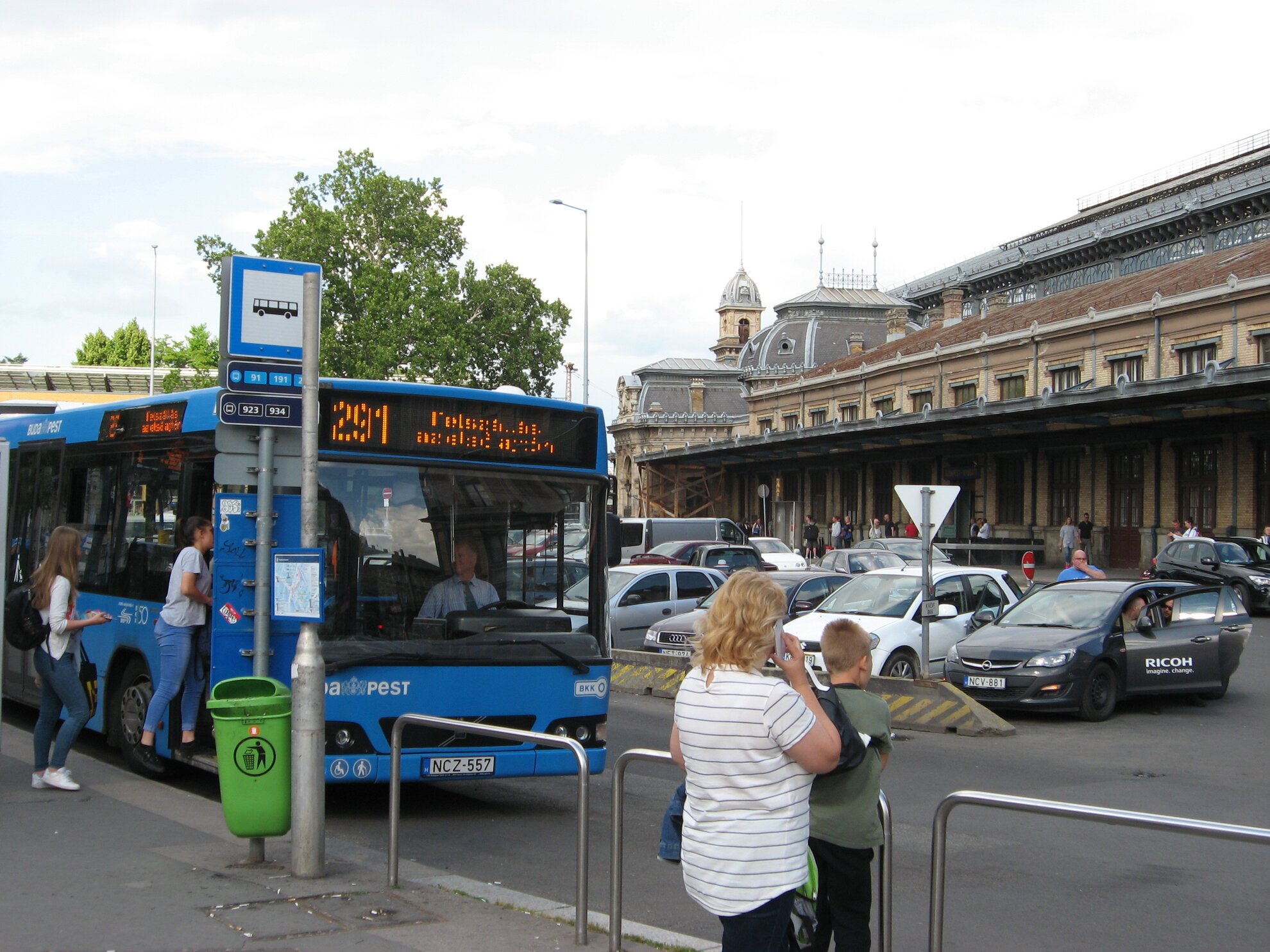
It’s difficult to imagine such all-encompassing hilly greenery while waiting for bus 291 to depart from its starting point at a major intersection by Nyugati Station; instead, passengers are surrounded by tram tracks, grey buildings and a traffic overpass… but only a few minutes after the engine rumbles into life, you’re crossing Margaret Bridge and zigzagging your way up into Buda’s ritzy Rózsadomb district, sprinkled with grand villas and leafy hillside parks.
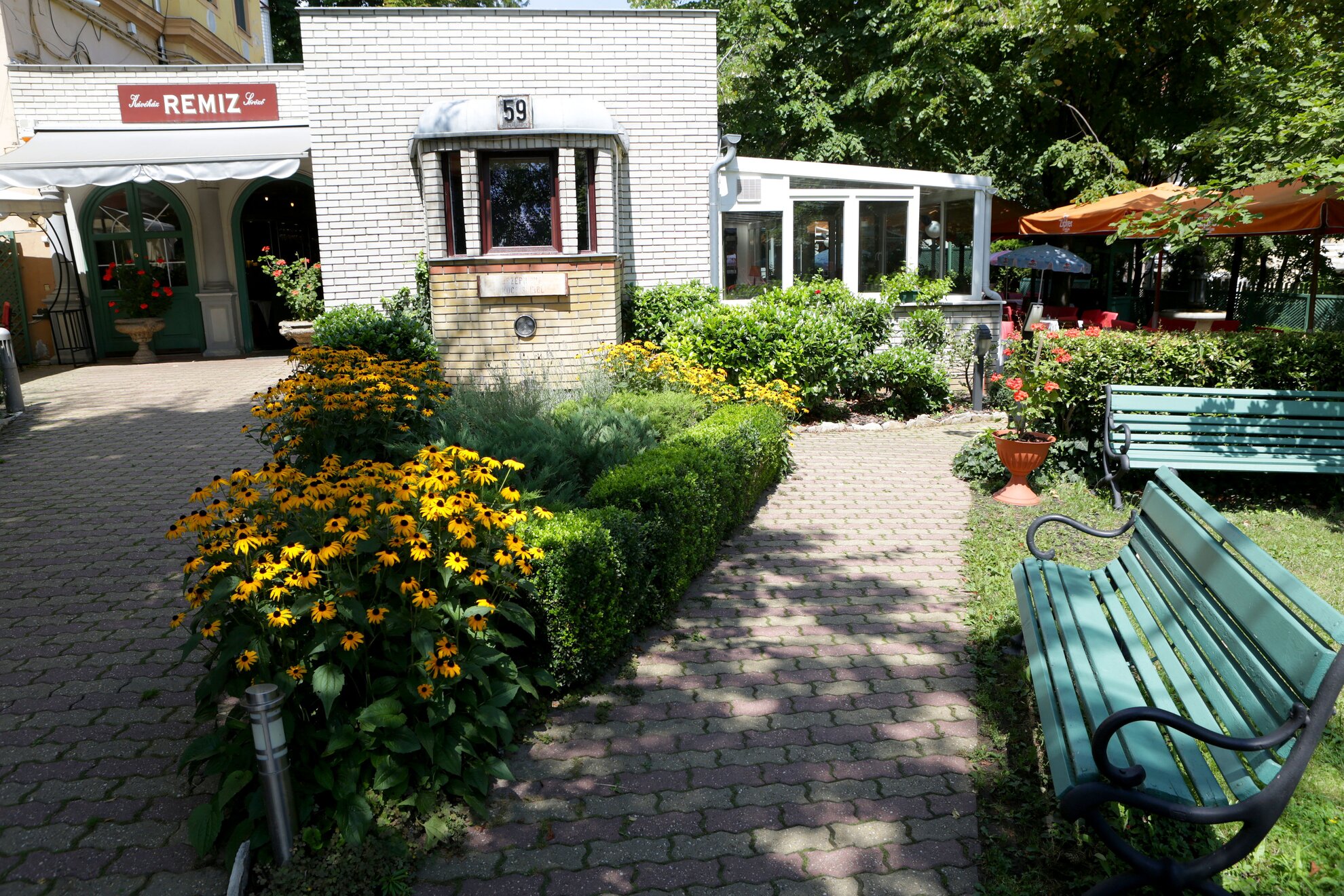
Along the way to Zugliget, line 291 provides easy access to several notable garden restaurants ideal for alfresco meals in summer: elegant Émile is located right next to the Orló utca stop, while the historic Szép Ilona and Remíz eateries are sited side-by-side at the Szépilona stop.
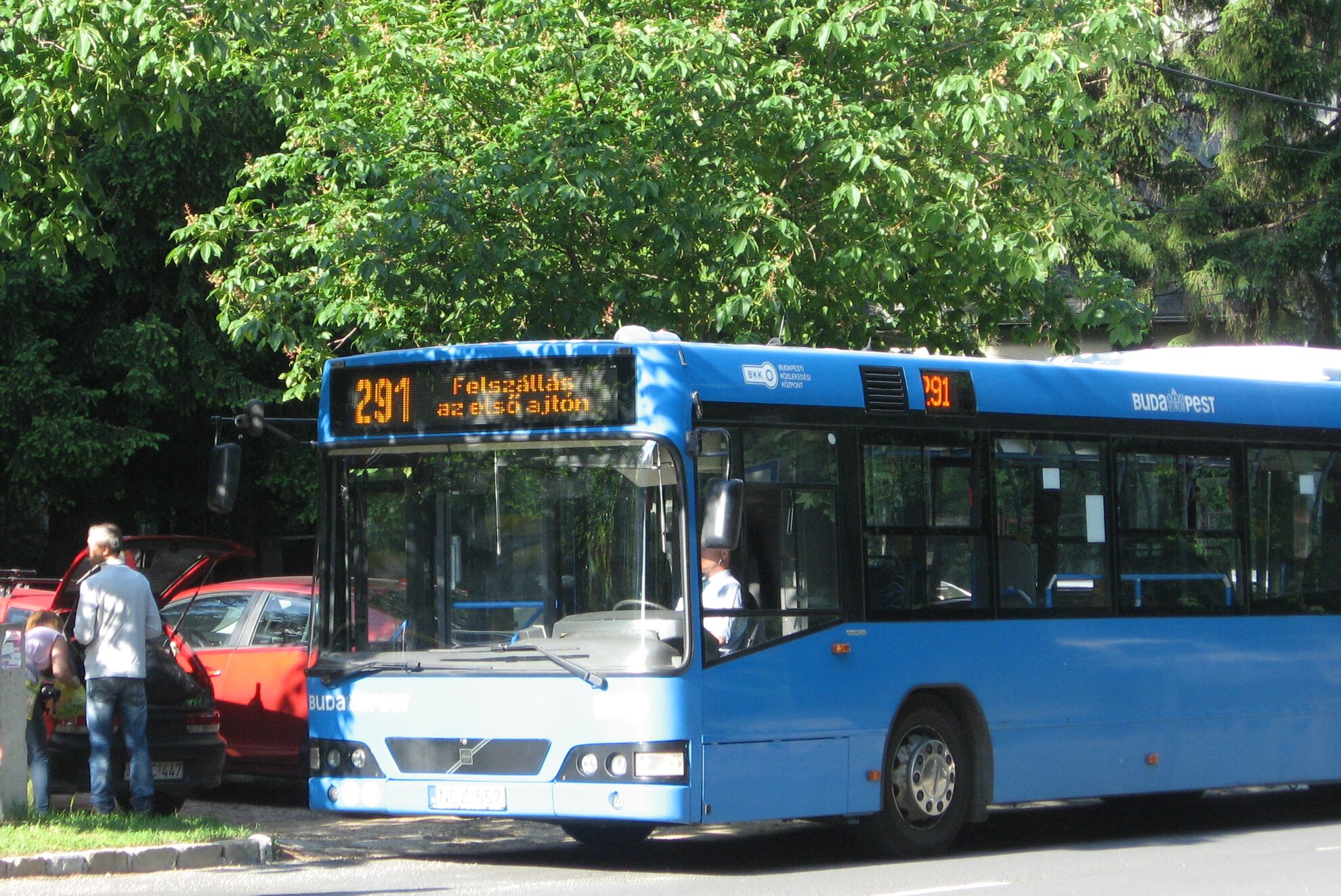
After the gentle roller-coaster ride through Buda’s foothills, bus 291 comes to a stop in Zugliget’s pristine valley walled by precipitous nature preserves, seeming more like a remote Alpine outpost than a neighbourhood of Hungary’s capital. Here a shaded campground welcomes Budapest visitors who prefer fresh air over Airbnb, and everyone can dine at the camp’s charming on-site restaurant within a vintage tram. Nevertheless, most Zugliget day-trippers rush to the ivy-covered chairlift base station, a generations-spanning starting point for countless Magyar memories of family escapades and romantic dates.
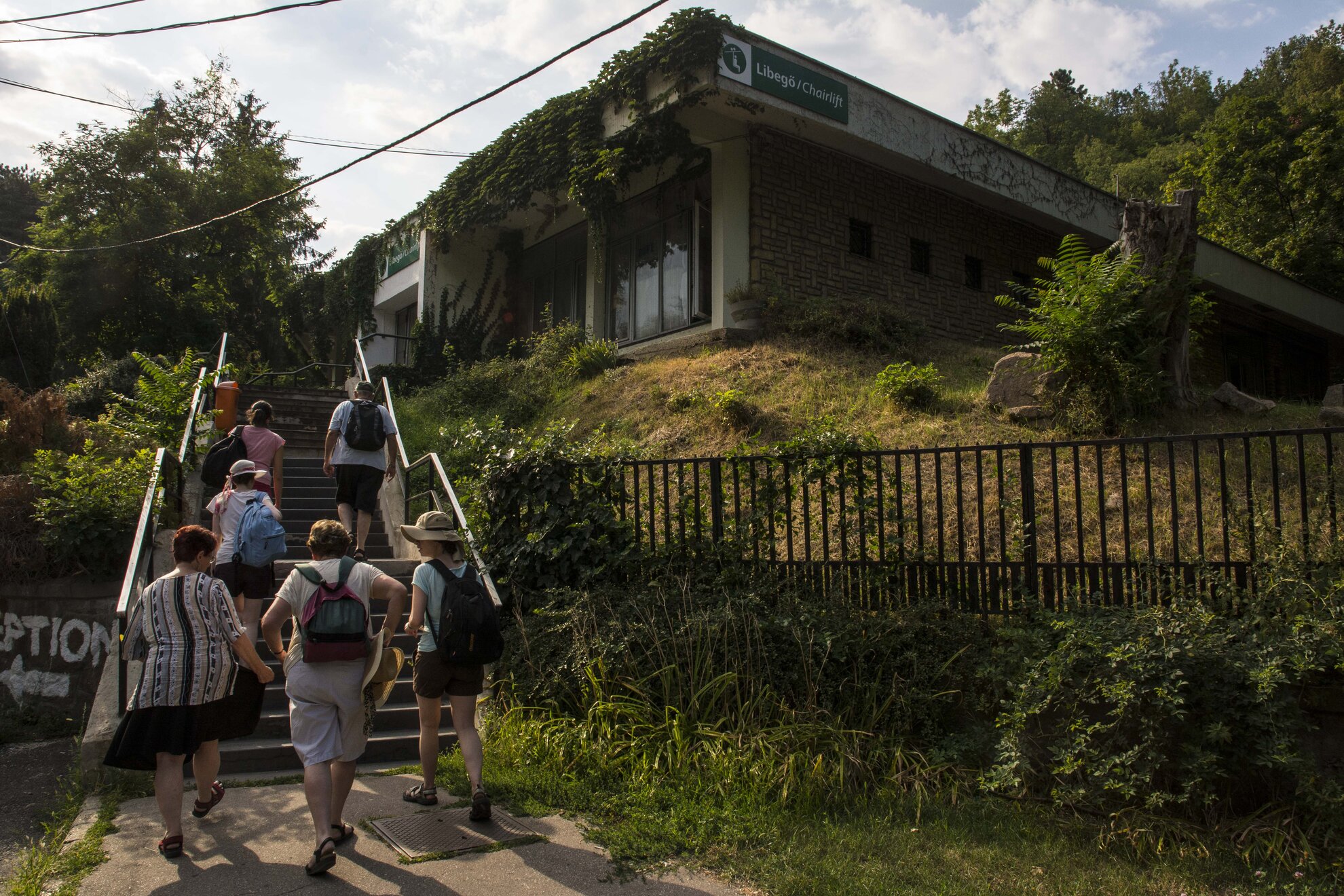
The chairlift began operating in 1970, but according to Budapest’s BKV public-transport company – which maintains this and several other vintage vehicles around Hungary’s capital – the concept for the Zugliget Chairlift was first hatched by Magyar engineer István Hantos Jr. in 1933. Unsurprisingly, the construction of such a mammoth leisure facility encountered logistical difficulties (including the bureaucratic process of obtaining permits and the outbreak of World War II), so it wasn’t until the late 1960s that Budapest’s Soviet-controlled authorities managed to get the chairlift built as part of ongoing efforts to keep their Hungarian subjects happy and avoid any repeats of the 1956 Revolution.
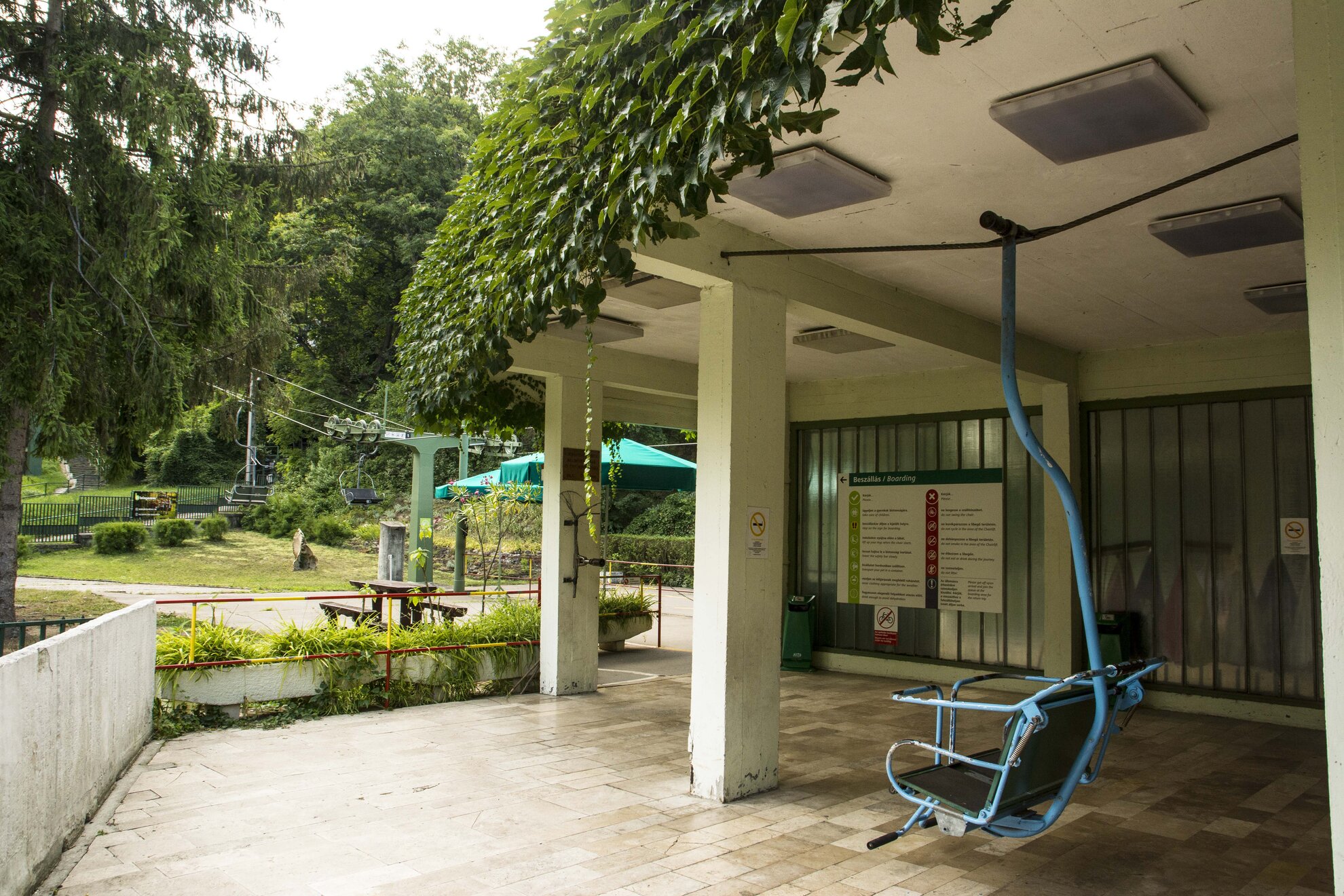
Judging by appearances, the chairlift base station is largely unchanged since those heady days of Goulash Communism, although the snack bar now sports more bourgeois-friendly signage and there is plenty of English-language information available about tickets and operating hours. A return chairlift ticket costs 1,400 forints, and 800 forints for under-18s. Children up to the age of two ride for free, although parents should carefully assess the likelihood of their toddlers experiencing an extended midair freak-out before ushering their young ’uns aboard this Soviet-era conveyance.
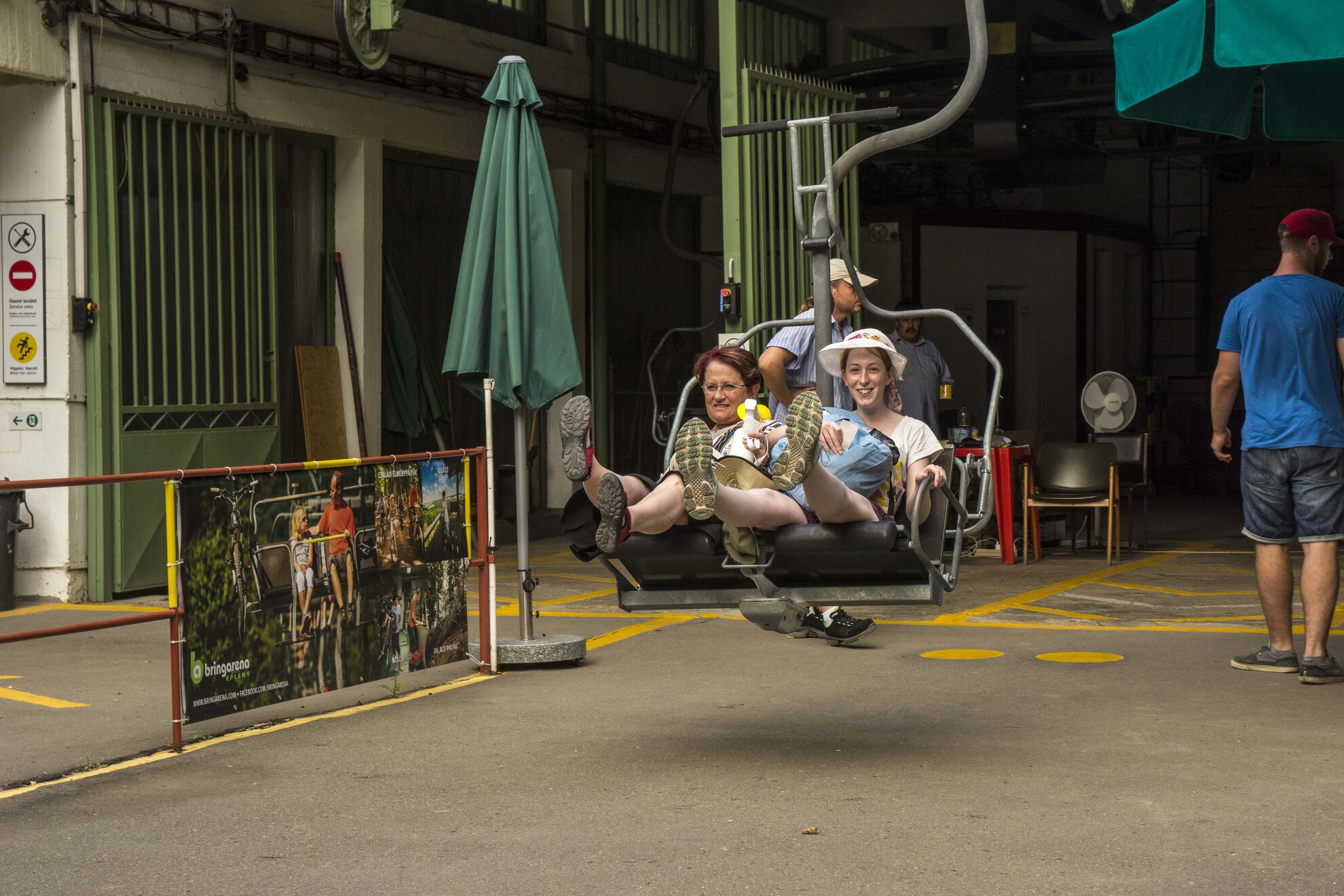
The beginning of this chairlift ride can be intimidating for grown-ups, too – after waiting in the (sometimes-lengthy) queue, passenger pairs stand on big yellow dots with their backs against the oncoming bench seat that literally sweeps them off their feet at an impressively steady clip. Almost immediately we are swinging storeys above vertiginous mountain terrain, passing over isolated holiday homes whose relaxation-seeking residents must tire of waving back to chairlift riders overhead, but who valiantly wave on.
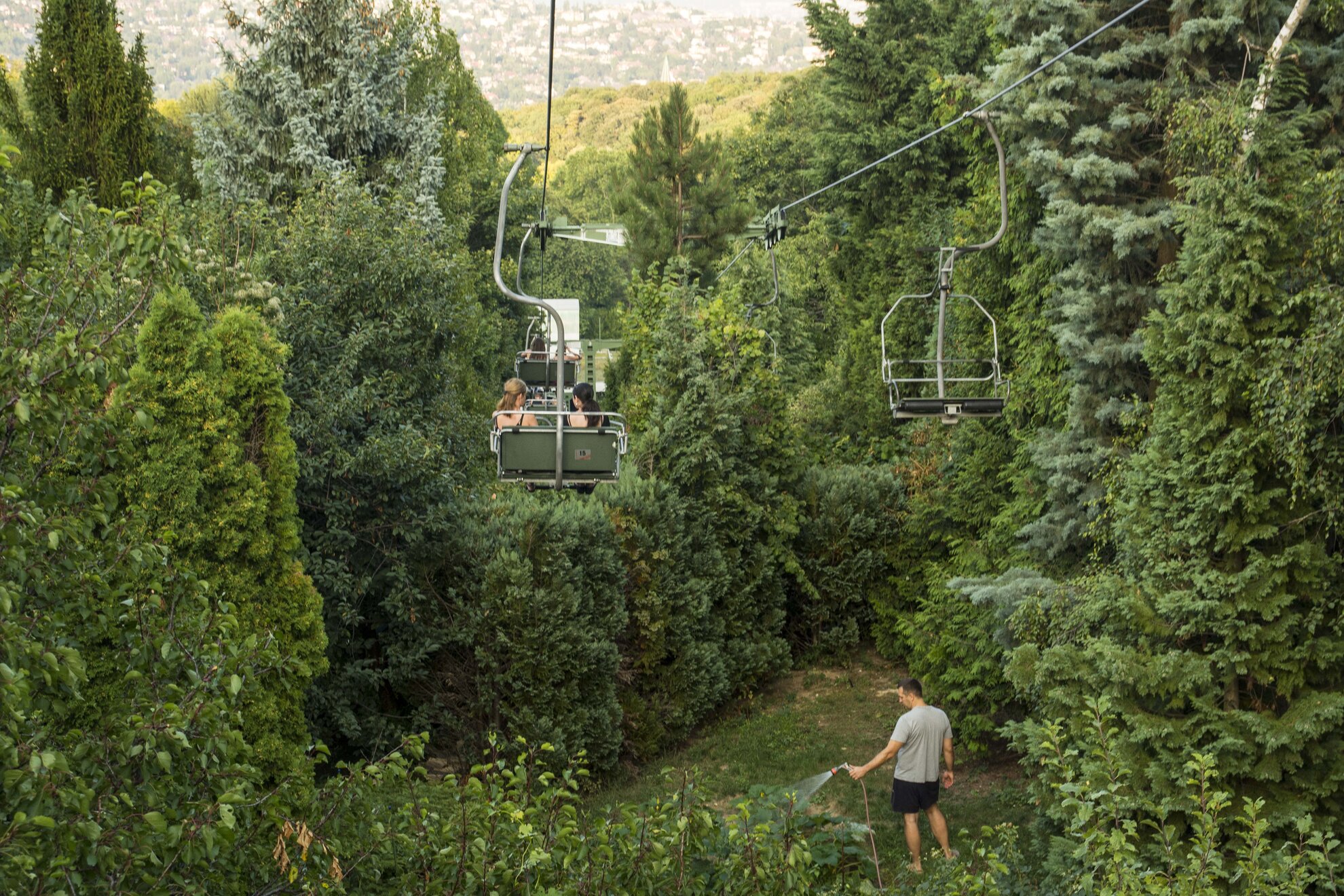
During the chairlift’s upward journey, theever-approaching rising forest scenery of János Hill dominates the view ahead, but make sure to look behind you to admire the far-reaching vistas over Buda to Pest and far beyond… or just wait until the trip back down, when all of the Magyar metropolis spreads out before your eyes throughout most of the ride.

City views are largely obscured at the scrub-surrounded summit station – for Budapest’s very best panorama point, head to the right when leaving the building to begin the ten-minute walk up János Hill’s final peak to the 527-meters-above-sea-level Elizabeth Lookout Tower, built in 1911 with blueprints by Frigyes Schulek of Fishermen’s Bastion fame.

Many other open-air attractions await around the chairlift summit point – another snack bar and a sprawling playground beckon right next to the station, while a short downhill hiking trail leads to the nearby stop for Buda’s beloved Children’s Railway, another Communist-era recreational conveyance still operating year-round. Meanwhile, the many pleasures of Normafa’s ridge-top parkland can be enjoyed after a mostly level half-hour stroll on another rubberised path leading to the left when leaving the chairlift station.
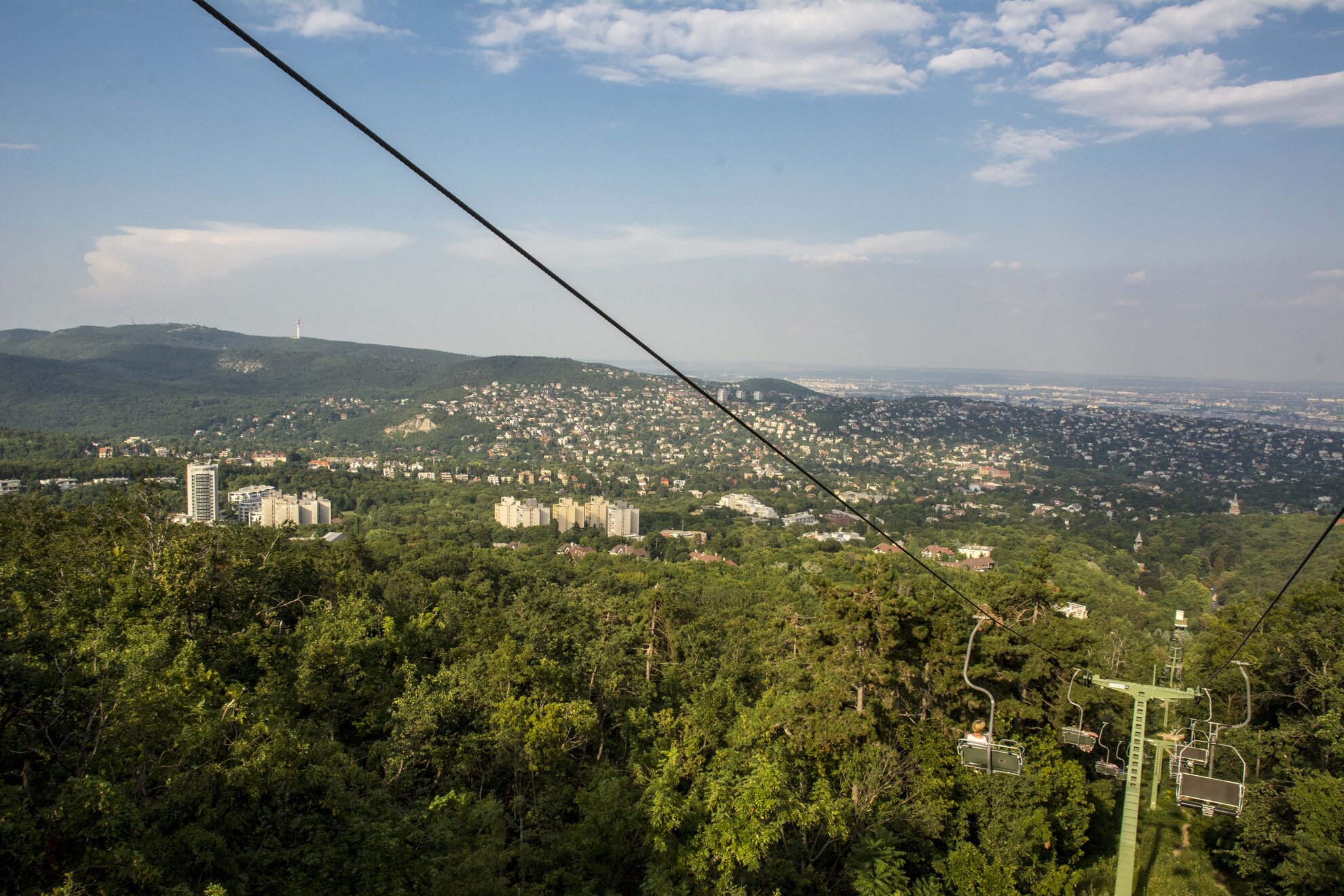
Hardcore hikers can discover numerous trails stretching from here into hinterlands far beyond Budapest, or even leading to a gravity-assisted János Hill descent into civilisation but, of course, most chairlift passengers prefer to glide back down the cableway they came. During this earthbound journey, riders are often struck silent while absorbing the city-spanning scenery, aside from occasional efforts to spot a particular residence.

Once deposited back at the base station, exhilarated chairlift riders often rush right back to the bus 291 stop for the return journey to Nyugati, but for anyone who is not in a hurry to re-enter the urban scene, another notable sylvan attraction also awaits nearby – walk down the main road just a few meters to spot the recently opened Lóvasút community centre built within a recently restored historic red-brick building adorned with ornately carved wooden trim.
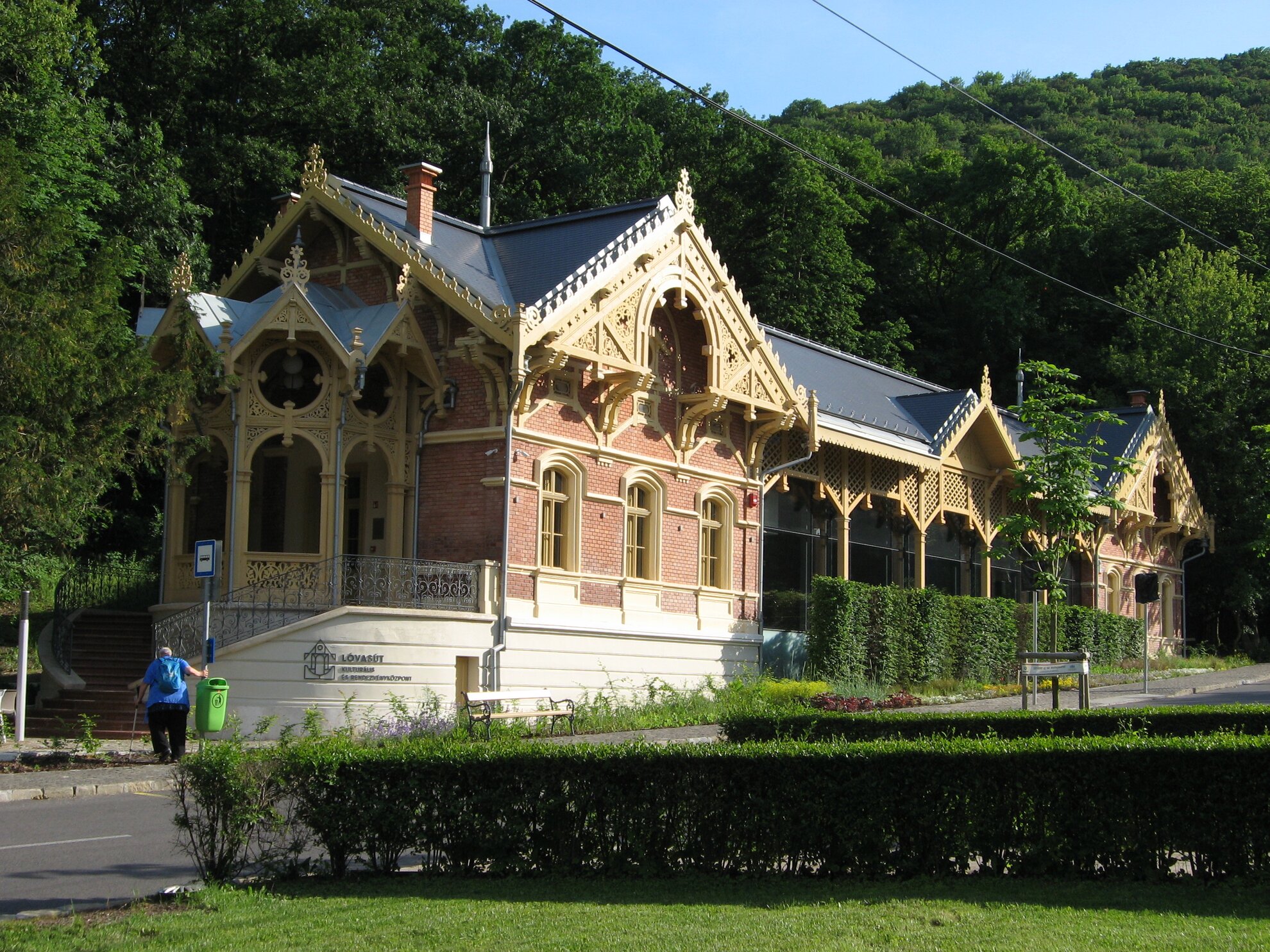
A century ago this was a storage facility for horse-drawn trams, but now it is an eye-catching performance venue hosting exhibits and featuring a tree-shaded garden lined with new benches perfect for resting after a hilltop excursion. Conveniently enough, this beautiful building stands next to a downtown-bound bus 291 stop.
